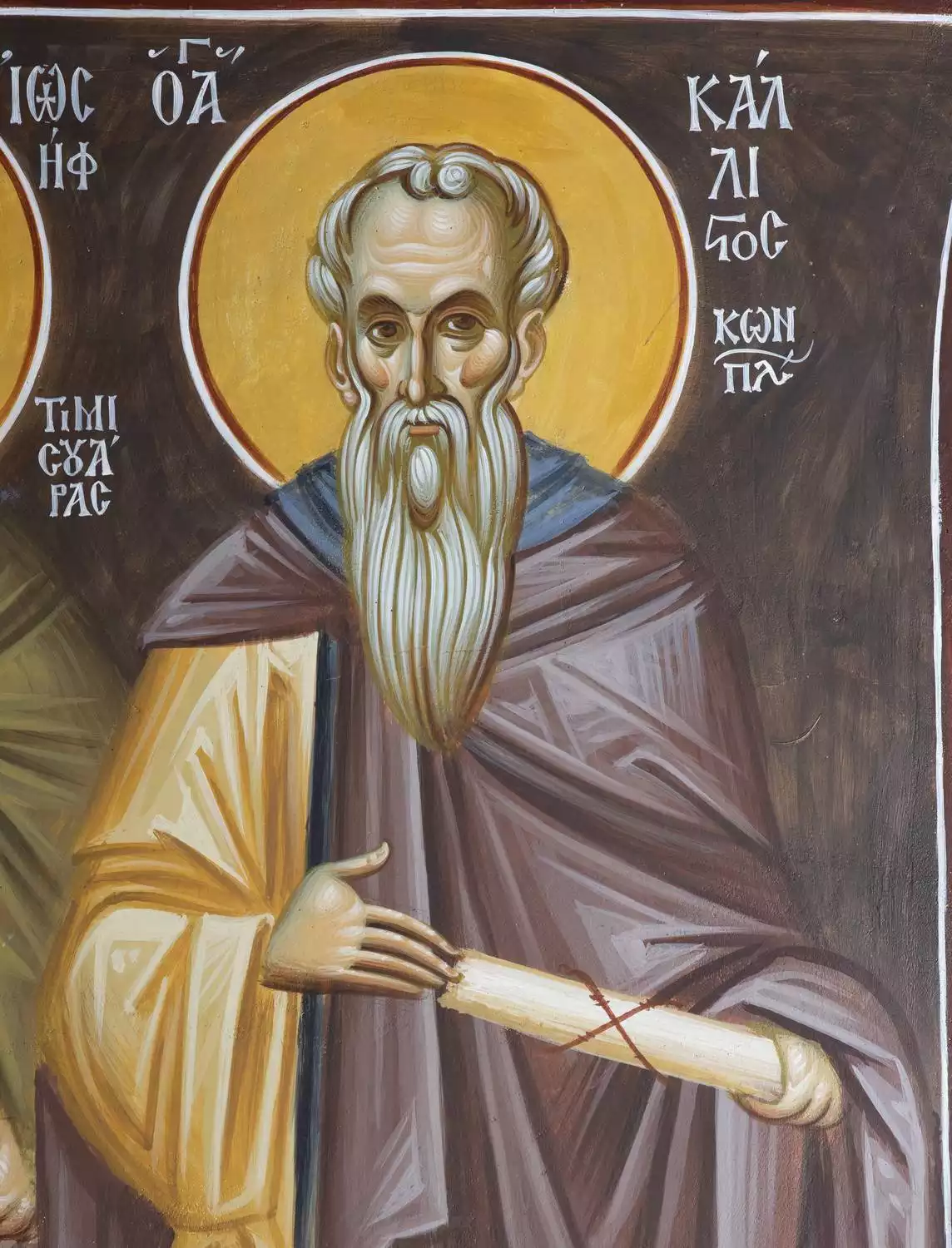
Saint Patriarch Callistus I, a significant figure in Byzantine history, was born in the 13th century and passed away in August 1363. His tenure as the Patriarch of Constantinople, from 1350 to 1353 and again from 1355 to 1363, marked a period of profound religious and political influence. Recognized for his deep spirituality and erudition, Callistus I played a pivotal role in the theological and monastic landscape of his time.
Early Life and Monastic Calling
Patriarch Callistus I’s journey began as a monk in the Skete of Magoula near the Iviron Monastery on Mount Athos. Under the tutelage of Saint Gregory of Sinai, Callistus embraced a life of asceticism and scholarship. His profound dedication to monastic ideals was evident in his early works, notably the ‘Agioritikos Tomos’, advocating for the contemplative life. During these formative years, Callistus also served as a priest, deeply immersed in the spiritual rhythms of monastic life.
This period of intense spiritual devotion laid the foundation for his theological pursuits and ecclesiastical contributions. Saint Callistus I’s ascetic practices at the Monastery of Pantokrator and his involvement in its founding underscored his commitment to monastic ideals. His life at Mount Athos was marked by a deep engagement with Hesychasm, a mystical tradition emphasizing inner quietude and direct experience of God.
Rise to the Patriarchate and Ecclesiastical Achievements
Elevated to the Patriarchal Throne on June 10, 1350, Callistus I’s ascension was a testament to his spiritual stature and theological acumen. His election, strongly supported by Emperor John VI Kantakouzenos, was a reflection of his reputation as a stalwart defender of Orthodoxy, particularly against the Bogomil heresy prevalent during that era.
Patriarch Callistus I’s tenure was marked by decisive leadership and theological depth. His stand against magicians and enchanters, as evidenced in his ‘Homily against Magicians’, highlighted his commitment to Orthodox doctrine. The Synod of Blachernae in 1351, held under his aegis, was a critical moment in Byzantine history, firmly establishing the teachings of Saint Gregory Palamas, a central figure in Hesychastic spirituality.
One of Saint Callistus I’s most controversial decisions was his stance against the autonomously elevated ‘Patriarchate’ of Pec and his excommunication of the Serbian Tsar and the self-proclaimed Patriarch. This bold move reflected his unwavering commitment to ecclesiastical order and Orthodoxy’s doctrinal purity.
Later Years and Diplomatic Endeavors
In 1355, following his reinstatement as Patriarch, Saint Callistus I supported the construction of significant monastic centers, including the Metamorphosis Sotiros in Meteora. His second tenure was also notable for the establishment of the Monasteries of Pantokrator and Simonos Petra in Mount Athos. Additionally, he played a key role in setting the commemoration date for Saint Gregory Palamas and the establishment of the Metropolis of Ugrublachia.
His diplomatic skills were particularly evident in 1363 when he led a delegation to Queen Elisabeth of Serbia. This mission aimed to forge an alliance against the rising Turkish threat in Thrace. However, during this diplomatic mission, Patriarch Callistus I fell ill and passed away, leading to speculations of possible foul play.
Legacy and Sainthood
Patriarch Callistus I’s legacy is multifaceted, encompassing theological, ecclesiastical, and diplomatic achievements. His written works, including various epistles and synodical decisions, reflect his profound faith and literary talent. His contributions to Orthodox theology, particularly his defense of Hesychasm, have had a lasting impact. The Orthodox Church honors him as a saint, commemorating his life and spiritual legacy on June 20th.
Saint Patriarch Callistus I’s life and tenure as Patriarch of Constantinople were marked by deep spiritual commitment, theological acumen, and influential ecclesiastical leadership. His contributions to the Byzantine Church, both in theological discourse and monastic reform, remain a significant part of Orthodox Christian heritage.
Feast Day: June 20
Patron Saint of: Orthodox Theology, Monasticism
References
- IMS National Research Network (Accessed January 11, 2024).
- Academia.edu – Das Patriarchat von Konstantinopel (Accessed January 11, 2024).
- Academia.edu – Das Patriarchat von Konstantinopel und das politische und religiöse Umfeld des 14 Jh. (Accessed January 11, 2024).
